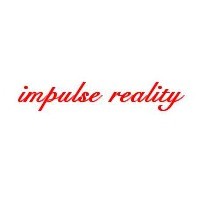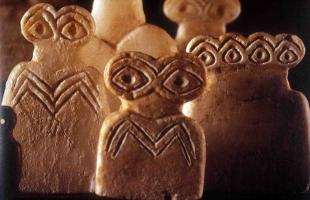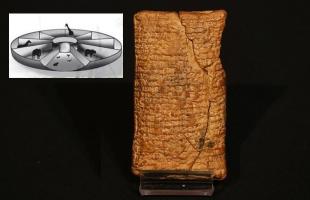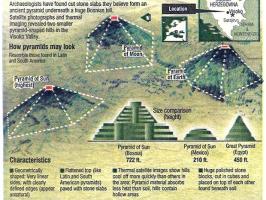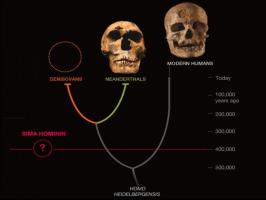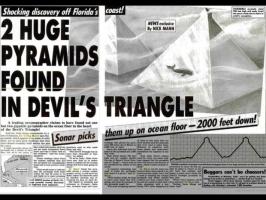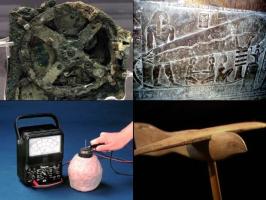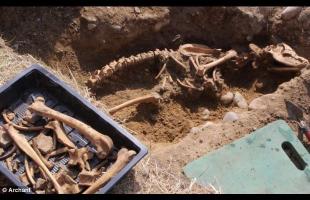Copy Link
Add to Bookmark
Report
AIList Digest Volume 5 Issue 278

AIList Digest Friday, 4 Dec 1987 Volume 5 : Issue 278
Today's Topics:
Queries - Expert Systems for Restoring Load-Flow &
Applied Neural-Network Experiences &
Training Sets for Rule Induction & Medical CAI References &
Portable OPS-5 and CLIPS 4.0 & CogSci Call for Papers &
RACTER & DCG Parser & Recording Mouse Input,
Journal Issue - AI in DAEDALUS,
Reports - Neural Network Reports
----------------------------------------------------------------------
Date: Tue, 24 Nov 87 18:50:01 GMT
From: A385%EMDUCM11.BITNET@CUNYVM.CUNY.EDU
Subject: Expert systems restoring load-flow andbiliography
Date: 24 November 1987, 18:31:46 GMT
From: Javier Lopez Torres Tf: (91) 7113887 A385 at EMDUCM11
Hello AI community from Spain!
The AI department of this University (Complutense de Madrid) along with a great
Spanish electric company are planning to develop an expert system to restore
high tension networks when overloading on the load flow appears.
We are interested in dynamic determination of speed and voltage governors at
electric centrals to perform dynamic simulation studies -Stability and calcula-
tion analysis.
At the moment we are using the PSS/E package to calculate the load flow dis-
tribution, running on a VAX/750 and have a lot of problems to connect it to our
MODCOMP computer. So, please:
(1) Is there anyone who have done the above studies or knows someone who ha
ve done it?.
(2) Is anyone aware of any survey publications related to the above mentio-
ned areas?
(3) Has anyone got any bibliography related to the above subject areas?
We are most interested in communicating with researchers currently involved
in this kind of expert systems.
Thanks you very much in advance for any help or suggestion as we're really
very misled.
Sincerely:
Javier Lopez Torres
Universidad Complutense de Madrid
A385%EMDUCM11.BITNET
------------------------------
Date: 1 Dec 87 06:26:36 GMT
From: portal!cup.portal.com!Barry_A_Stevens@uunet.uu.net
Subject: request for information, offer to share info on neural nets
REQUEST FOR INFORMATION ON NEURAL NETWORKS
Barry A Stevens
Applied AI Systems
-
I am conducting a survey to identify the "useful" neural network
paradigms. There are many available, but few have established
themselves as robust and trainable in the commercial environment.
-
I seek either: pointers to information sources, or information itself.
With enough response, I will summarize and post to the net. The three
types of information sought are:
-
***The usefulness of the network paradigms listed below when applied
to real problems with real data;
-
***The tests that a set of training data must meet to be useable with
each of the paradigms;
-
***The classes of problems for which each paradigm is useful.
-
-
Comments on stability, robustness, ease of construction and test, and
results obtained from the application would be useful and welcome.
Pointers to sources that contain such information are equally welcome.
-
I already have access to numerous technical papers that talk about
such things as "spatiotemporal uses" as a class of applications. What
is of more interest is "The Spatiotemporal Paradigm was successfully
used to identify specific waveforms and patterns in foreign currency
trading data... etc.". Or this: "a backpropogation network was used to
implement a consumer loan approval system, with performance exceeding
both that of human loan officers making the loans and a rule-based
expert system designed for the same purpose. The network was trained
in three weeks, the expert system took two manyears to build."
-
These network paradigms are of specific interest:
-
Back Propogation
Back Propogation - shared weights
Counter Propogation
Adaptive Resonance 1 and 2
Binary Associative Memory
Spatiotemporal Network
Neocognitron
Hopfield Network
Kohonen Feature Map
Boltzman Machine
Group Method of Data Handling
Barron Associates: polynomial synthesis
-
If there are others that you feel are also of interest, please feel
free comment on them as well. Also, I realize that some of these are
not neural network paradigms per se, but they have been used in the
same situations and are therefore of interest.
-
I can be reached by email or at this address and phone:
-
Barry A Stevens
Applied AI Systems, Inc.
PO Box 2747
Del Mar, CA 92014
619-755-7231
------------------------------
Date: 2 Dec 87 02:22:18 GMT
From: stuart%warhol@ads.arpa (Stuart Crawford)
Reply-to: stuart@ads.arpa ()
Subject: Training Sets Needed for Rule Induction System
I'd like to start a collection of training sets for use with a rule induction
system. The basic requirements are that a training set be composed of a
collection of observations, each of which consists of a *known* class
assignment, and a vector of observed features. The features may be integer,
real or nominal (categorical) valued.
Ideally, I am looking for training sets which are drawn from a medical domain,
and have from 50-500 observations. Real data is preferred, but simulated data
is ok too. However, if the data is simulated, please supply the relevant
information needed to re-generate the data (program used, random number
generator used, random number seeds used, etc.).
If you have a training set, please contact stuart@ads.arpa.
Stuart Crawford
Advanced Decision Systems
201 San Antonio Circle, Suite 286
Mountain View, CA 94040
(415) 941-3912 x325
Stuart
------------------------------
Date: 30 Nov 87 19:13:02 GMT
From: cunyvm!byuvax!cockaynes@psuvm.bitnet
Subject: Medical CAI References?
I am conducting a literature
search of research studies
demonstrating the effectiveness
of computer assisted instruction,
especially computer simulations,
in medical education. Does anyone
know of recent or on-going
research?
Please e-mail responses to me
and I will summarize to the net.
Contact Susan Cockayne at
CockayneS@byuvax.bitnet
------------------------------
Date: 1 Dec 87 16:38:50 GMT
From: ihnp4!homxb!whuts!mtune!codas!ufcsv!beach.cis.ufl.edu!mfi@ucbvax
.Berkeley.EDU (Mark Interrante)
Subject: Portable OPS-5? and CLIPS 4.0?
In a recent paper I saw a references to portable ops5 and clips 4.0.
It is my understanding that these are public domain. Dose anyone have
copies that could be Emailed?
------------------------------
Date: 3 Dec 87 00:56:31 GMT
From: A.GP.CS.CMU.EDU!spiro@PT.CS.CMU.EDU (Spiro Michaylov)
Subject: CogSci call for papers wanted
Does anybody have a soft copy of the call for papers for the next CogSci
conference? If so could you please e-mail it to me directly?
Otherwise pointers to a hard copy would be appreciated.
Thanks in advance.
Spiro Michaylov.
CMU-CS.
spiro@a.gp.cs.cmu.edu
------------------------------
Date: Thu, 03 Dec 87 20:04:39 EST
From: Michael Nosal <ST502042%BROWNVM.BITNET@WISCVM.WISC.EDU>
Subject: Request for RACTER
Howdy!
I am interested in locating the (in)famous 'AI' program RACTER. Unfortunately I
don't remember too much about it except that I first heard about it in an arti
cle in Scientific American and that a book called "The Policeman's Beard is Hal
f Constructed" that contained bits of prose that it created was published a few
years ago. I am interested in finding any version of the program (source code
would be fantastic) If there is a group or company that owns the rights to it o
r is selling a commercial version, I would love to know their address. While I'
m on the subject, if anyone knows of other 'Eliza-like' AI programs out there,
please let me know.
Thanks in advance,
Michael Nosal (please respond to this account if possible)
------------------------------
Date: Thu, 03 Dec 87 20:27:46 EST
From: ganguly@ATHENA.MIT.EDU
Subject: DCG
Hi!
Does someone have a Definite Clause Grammar parser written in
Edinburgh PROLOG that I may use as an user interface ?
Thanking in advance,
Jaideep Ganguly
------------------------------
Date: Thu 3 Dec 87 11:42:56-CST
From: CS.MARTINICH@R20.UTEXAS.EDU
Subject: recording mouse input
Does anyone know of a program that "records" mouse input on a
SUN workstation? I need a program that "records" mouse input
which can be "played back" as input to a program.
I would appreciate any information on such a program.
--Leslie Martinich
cs.martinich@r20.utexas.edu
------------------------------
Date: Mon, 23 Nov 87 15:54:46 EST
From: amcad!alyson@husc6.harvard.edu
Reply-to: alyson%amcad.uucp@husc6.harvard.edu
Subject: AI DAEDALUS
To: Robert Engelmore Editor-in-chief AI Magazine Menlo Park, CA.
Re: New issue of DAEDALUS on AI
Parl Gerald (BCS) has suggested that I be in touch with you concerning
our Winter 1988 issue of DAEDALUS - journal of the American Academy of
Arts and Sciences - which deals exclusively with "Artificial Intelligence."
Both he and Mike Hamilton (AAAI) have suggested that it might be useful
to get news of this forthcoming issue onto the ARPANET AI Bulletin Board.
Authors in the forthcoming issue include: Papert, Dreyfus H & S, Sokolowski,
McCorduck, Cowan & Sharp, Jacob Schwartz, Reeke & Edelman, Hillis, Waltz,
Hurlbert & Poggio, Sherry Turkle, Putnam, Dennett and McCarthy. Subjects
include, among others, the following: Natural and AI, Neural Nets and AI,
Real Brains and AI, Making Machines See, AI and Psychoanalysis, Philos-
ophers Encounter AI, and Mathematical Logic and Ai.
Copies from printer avialable by mid-December.
Best wishes,
Guild Nichols
DAEDALUS
------------------------------
Date: Wed, 2 Dec 87 12:26:33 EST
From: takefuji%uniks.ece.scarolina.edu@RELAY.CS.NET
Subject: Neural Network Reports
A Conductance programmable "neural" chip based on a Hopfield model employs
deterministically/stochastically controlled switched resistors
Yutaka Akiyama*, Yoshiyasu Takefuji**, Yong B. Cho**, Yoshiaki Ajioka*,
and Hideo Aiso*
* Keio University
Department of Electrical Engineering
3-14-1 Hiyoshi, Kouhoku-ku, Yokohama 223
JAPAN
** University of South Carolina
Department of Electrical and Computer Engineering
Columbia, SC 29208
(803)-777-5099
Abstract
The artificial neural net models have been studied for many years.
There has been a recent resurgence in the field of artificial neural
nets caused by Hopfield. Hopfield models are suitable for VLSI
implementations because of the simple architecture and components such
as OP Amps and resistors. However VLSI techniques for implementing the
neural models face difficulties dynamically changing the values of the
conductances Gij to represent the problem constraints.
In this paper, VLSI neural network architectures based on a Hopfield
model with deterministically/stochastically controlled variable
conductances are presented. The stochastic model subsumes both
functions of the hopfield model and Boltzmann machine in terms of
neural behaviors. We are under implementations of two CMOS VLSI
neural chips based on the proposed methods.
_______________________________________________________________________________
Multinomial Conjunctoid Statistical Learning Machines
Yoshiyasu Takefuji, Robert Jannarone, Yong B. Cho, and Tatung Chen
Unversity of South Carolina
Department of ECE
Columbia, SC 29208
(803)777-5099
ABSTRACT
Multinomial Conjunctoids are supervised statistical modules that learn
the relationships among binary events. The multinomial conjunctoid
algorithm precluded the following problems that occur in existing
feedforward multi-layerd neural networks:(a) existing networks often
cannot detemine underlying neural architectures, for example how many
hidden layers should be used, how many neurons in each hidden layer are
required, and what interconnections between neurons should be made;(b)
existing networks cannot avoid convergence to suboptimal solutions
during the learning process; (c) existing networks require many
iterations to converge, if at all, to stable states; and (d) existing
networks may not be sufficiently general to reflect all learning
situations.
By contrast multinomial conjunctoids are based on a well-developed
statistical decision theory framework, which guarantees that learning
algorithms will converge to optimal learning states as the number of
learning trials increases, and that convergence during each trial will
be very fast.
_________________________________________________________________________
Conjunctoids: Statistical Learning Modules for Binary Events
Robert Jannarone, Kai Yu, and Y. Takefuji
University of South Carolina
Department of ECE
Columbia, SC 29208
(803)777-7930
ABSTRACT
A general family of fast and efficient PDP learning modules for binary events
is introduced. The family (a) subsumes probabilistic as well as functional
event associations; (b) subsumes all levels of input/output associations; (c)
yields truly parallel learning processes; (d) provides for optimal parameter
estimation; (e) points toward a workable description of optimal model
performance; (f) provides for retaining and incorporating previously learned
information; and (g) yields procedures that are simple and fast enough to
be serious candidates for reflecting both neural functioning and real time
machine learning. Examples as well as operationial details are provided.
_________________________________________________________________________
If you need the full copies of those papers, please state which papers you are
requesting through Email, phone, or USmail.
For Multinomial and VLSI neural chips papers:
Dr. Y. Takefuji
University of South Carolina
Deparment of Electrical and Computer Engineering
Columbia, SC 29208
(803)777-5099
(803)777-4195
takefuji@uniks.ece.scarolina.edu
For Conjuncoids papers:
Dr. Robert Jannarone
University of South Carolina
Department of Electrical and Computer Engineering
Columbia, SC 29208
(803) 777-7930
jann@uniks.ece.scarolina.edu
Thank you...
------------------------------
End of AIList Digest
********************












